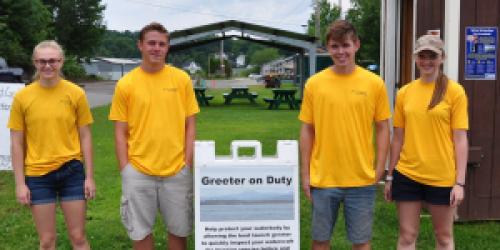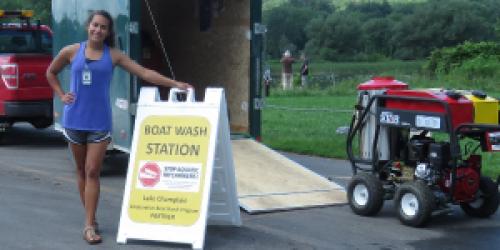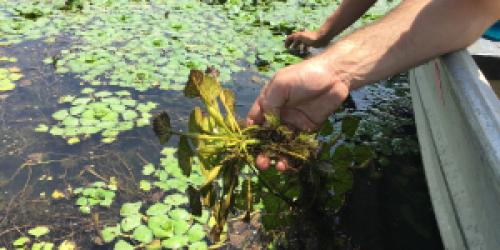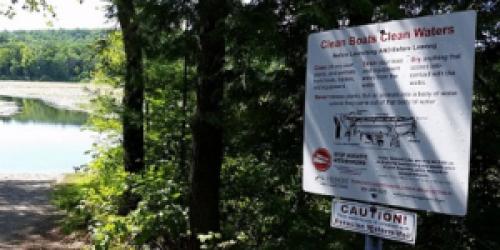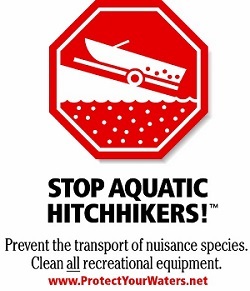There are many ongoing programs in Vermont aimed at curbing the spread of invasive species and preventing new infestations. These initiatives are supported by Vermont DEC and often involve participation from landowners, watershed associations, and other interested volunteers.
Spread Prevention
Before moving boats between waterbodies:
When Hot water rinsing/flushing is available:
Step 1. CLEAN: Remove any plant and animal material from the watercraft and trailer.
- Rinse equipment, boat hulls, and trailer with high pressure, hot water at 140°F (60°C).
- Rinse interior compartments with low pressure, hot water at 120°F (49°C).
- Flush motor and fill/flush ballast tanks (if present) with hot water for 3-5 minutes at 120°F (49°C) or according to owner's manual.
Step 2. DRAIN: Remove all plugs, turn over engine(s) and drain the watercraft thoroughly, including live wells, water boxes, baffles, bilge and ballast tanks, and other water containing compartments, to the fullest extent possible.
When cold water rinsing/flushing is available:
Step 1. CLEAN: Remove any plant and animal material from the watercraft and trailer. Rinse equipment, boat hulls, and trailer; rinse all interior compartments; and flush motor and ballast tanks (if present).
Step 2. DRAIN: Remove all plugs, turn over engine(s) and drain the watercraft thoroughly, including live wells, water boxes, baffles, bilge and ballast tanks to the fullest extent possible.
Step 3. DRY: Let the watercraft dry for at least five days before launching on a different waterbody.
When rinsing/flushing is not available:
Step 1. CLEAN: Remove any plant and animal material from the watercraft and trailer.
Step 2. DRAIN: Remove all plugs, turn over engine(s) and drain the watercraft thoroughly, including live wells, water boxes, baffles, bilge and ballast tanks to the fullest extent possible.
Step 3. DRY: Let the watercraft dry for at least fourteen days before launching on a different waterbody.

